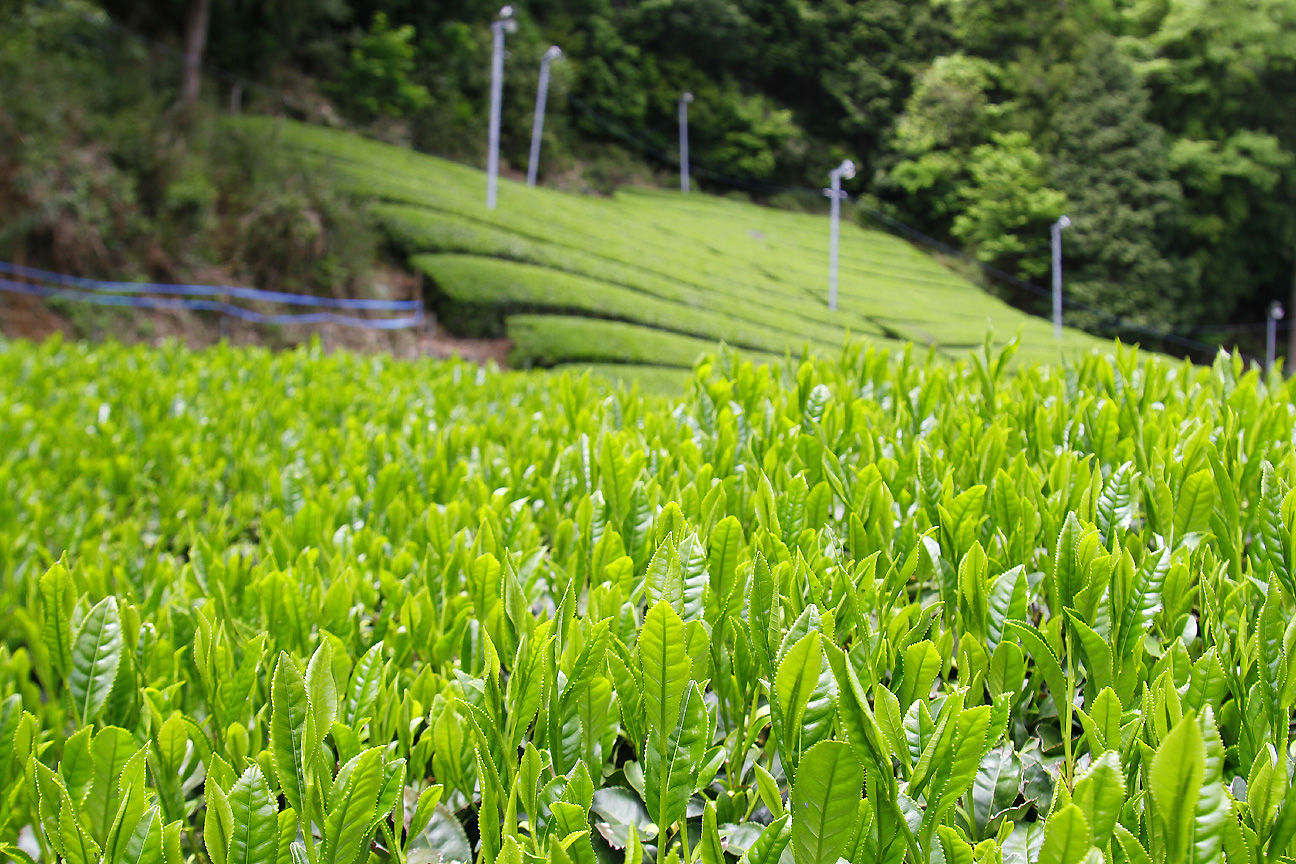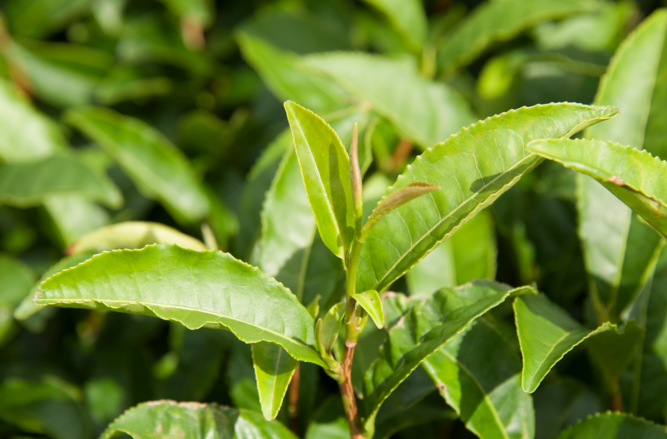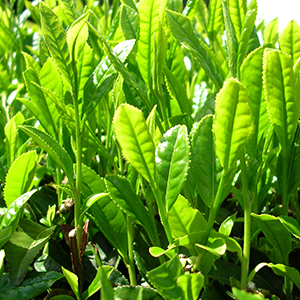Differences in taste characteristics and historical stories between Japanese matcha and green tea is matcha powder made of green tea
In the heyday of the Tang Dynasty, as people from all over the world went to China to study, Chinese tea also followed the envoys of the Tang Dynasty to his motherland, all over East Asia. Among them, a Japanese monk named Mingan Rongxi is known as the father of Japanese tea.
The Mingan Rongxi monk made two trips to China during the prosperous Tang Dynasty, where he studied religion and introduced Linji Zen Buddhism to Japan.
On his second trip, Minami brought tea seeds back to Japan and eventually successfully planted them in Japan, including the lush Yuji Mountains between Kyoto and Nara.
In fact, tea trees were planted in Japan as early as the eighth century. However, the widespread cultivation of tea trees in Japan has to start with the reintroduction of tea trees in Mingan Rongxi.
The reason why tea is popular in Japan is that Mingan Yoshiki mentioned the health and medical properties of tea in his book the Chronicles of Tea Health.
The first page of the book boldly introduces that tea is the ultimate therapy of psychology and medicine, with the ability to make life more complete.

Even Alan Watts, the British philosopher who introduced Eastern philosophy to the Western world, mentioned in the way of Zen The Way of Zen that if Christianity is wine, Islam is coffee, Buddhism must be tea.
Japanese art critic and thinker Tian Xin Okura wrote in the Book of Tea that tea entered the palace of poetry with the elegance of upper-class society in China in the eighth century. In the fifteenth century, Japan promoted it to an aesthetic belief, that is, the tea ceremony.
In Japan, the tea brewed by tea makers is not standard rolled tea, but matcha, which is steamed, dried and ground into fine powder.

When brewing tea, first use a bamboo tube to cut into a tea pot filled with a brush, and stir it in a fine teacup.
Okura Tianxin also said that in ancient China's Southern dynasties, poets called its glowing green tea bubbles "the foam of jade liquid".
Varieties of Japanese green tea
In the process of splitting cultivation of Japanese green tea, the raw materials of tea cyanine are obtained from different tea cultivation environments, including the need to be covered and not covered with rain before picking. The tea garden of the former is called Factory Fuxia Garden (which means mulch rather than cover), and the tea vegetables produced include matcha jade dew, while the tea garden of the latter is called factory open-air tea, and the tea vegetables in the green seat include fried tea, roasted tea, stem tea, black rice tea and so on.
1. Fuxia Garden
The so-called Fuxiaji refers to the tea garden covered during the production of new buds of tea trees. When the tea tree grows new buds, 20 days before picking, the whole tea garden will be covered with asparagus (or bamboo cream, shade cloth) to block sunlight in order to reduce astringency and increase sweetness. It is most suitable for making matcha and jade dew.
a. Yulu (GYOKURO): after picking its buds, processed to produce high-quality tea, smooth fragrance, nectar flavor is its characteristics, is a high-grade green tea.
b. Matcha (MACCHA): the tea vegetables in Yulu Tea Garden (Fuxia Garden) are picked, dried directly without kneading after steaming, and then ground into fine powdered tea powder with tea mortar, which can absorb the Ying Xi ingredients of tea vegetables when eating. Generally speaking, matcha is used in the traditional Japanese tea ceremony, while other dishes such as Heyang cuisine and foreign fruits (dim sum, pastry, candy) are also used a lot.

two。 Open-air garden
The so-called open-air garden is a tea garden that is not covered and is directly illuminated by the sun. Because of more sunshine and high content of catechins, the taste of tea is strong and refreshing. Due to the more sunshine of tea vegetables, the stronger the taste of Hao, compared with mature old dishes, the astringent taste of tea picked from young vegetables is less, which is more suitable for the production of green tea. Except for matcha and jade dew, Japanese tea is an open-air tea garden.
a. Fried tea (SENCHA): Chalai, which is the most popular in Japan since 738, is estimated to account for 85% of the number of tea vegetables in Japan. It is characterized by steaming and kneading into a needle-like solid shape, retaining the fragrance of tea vegetables and bringing some Ba flavor.
b. Sweet tea (BANCHA): after the buds are picked, the mature tea leaves are picked and the taste of the tea is light. Because it is the second harvest of tea (Note: the second Japanese is twice. ), it is called "pan tea". In some areas, "pan tea" refers to "baked tea".
c. Baked tea (HOUJICHA): fried tea or tea after stir-frying, so that tea vegetables produce a thick and special aromatic tea flavor, the most suitable for post-meal drinking tea, belongs to the general drinking tea. The original Xianyuan tea is brown, with a unique roasting flavor, almost no bitter and wet taste, refreshing and elegant taste. Due to the low content of caffeine and tannins, it is suitable for both young and old.

d. Stem tea (KUKICHA): also known as GARIGANE, is the tea selected from the stem (stem) of the tea (but there are still some tea vegetables) in the process of cracking jade dew and fried tea. The sweet taste of tea stem is lovable.
e. Xuanmi tea (GENMAICHA: commonly known as brown rice tea, mainly fried tea and fried brown rice mixed tea, is a heavy tea, belongs to the general drinking tea. This tea is a Japanese-style fragrant tea that has been fried by the fire and mixed with green tea. With the fragrance of fried rice, the flavor is excellent, when making tea, it must be brewed quickly with hot water. Xuanmi contains and is rich in vitamin BI, which is more formally called fried tea Xuanmi tea.
Powder tea (or tea powder): in the production process of jade dew or fried tea, the tea residue produced is powder tea. Most often drink in the poison shop, because the powdered tea vegetables brew up the tea soup is thicker, should not be soaked for too long. Tea vegetables are not fine broken, the appearance of bright green, is a good quality pink tea.
Important Notice :
前街咖啡 FrontStreet Coffee has moved to new addredd:
FrontStreet Coffee Address: 315,Donghua East Road,GuangZhou
Tel:020 38364473
- Prev

The difference of Taste characteristics between Fuding White Tea and Yunnan White Tea
According to the origin, the variety of Chinese white tea can be divided into Fuding white tea and Yunnan white tea. Fuding White Tea is produced in Fuding City, Fujian Province. It is the protection product of geographical indications in China. Fuding white tea mainly includes four kinds of white tea: 1. Baihao Silver Needle, also known as Silver Needle, was founded in 1796. This is a very high quality white tea. It is the most famous white tea in China. White silver
- Next

How many countries in the world grow tea? is there any good tea abroad? the development story of black tea is more famous.
A small country in Europe, Portugal. Cape Roca, at the westernmost end of the country, has built a cross facing the ocean. The monument engraved with the inscription "Lu" ends here, and the sea begins in Onde a terra acaba e o mar comea. The Portuguese are proud of the history of the great discoveries of navigation and geography, which are precisely because of the great discoveries of navigation and geography.
Related
- Beginners will see the "Coffee pull flower" guide!
- What is the difference between ice blog purified milk and ordinary milk coffee?
- Why is the Philippines the largest producer of crops in Liberia?
- For coffee extraction, should the fine powder be retained?
- How does extracted espresso fill pressed powder? How much strength does it take to press the powder?
- How to make jasmine cold extract coffee? Is the jasmine + latte good?
- Will this little toy really make the coffee taste better? How does Lily Drip affect coffee extraction?
- Will the action of slapping the filter cup also affect coffee extraction?
- What's the difference between powder-to-water ratio and powder-to-liquid ratio?
- What is the Ethiopian local species? What does it have to do with Heirloom native species?

